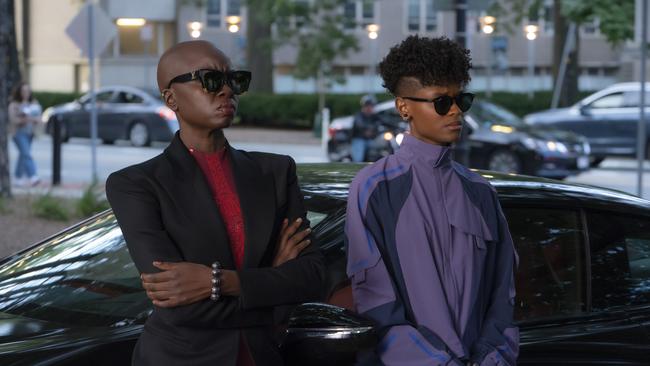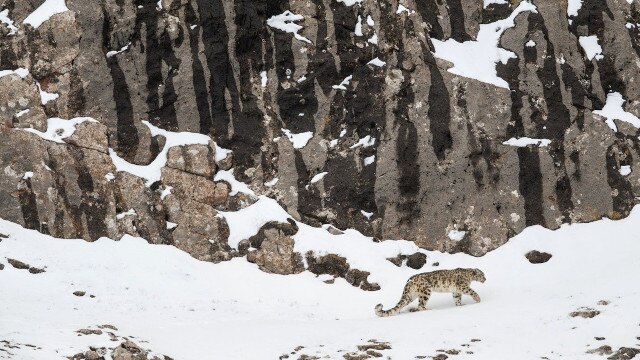Chadwick Boseman’s spirit lives on in Black Panther sequel
The original film became a rallying cry for black audiences the world over. Wakanda Forever isn’t as good but fans will love it.

Black Panther: Wakanda Forever (M)
In cinemas
★★★
Black Panther (2018) was almost a revolutionary film for the Marvel Cinematic Universe.
Unlike the white superheroes of the MCU (among them Iron Man, Thor, Dr Strange, Guardians of the Galaxy, Avengers, Bruce Banner aka Hulk, and others), Ryan Coogler’s film, which grossed a staggering $US1.3b ($2b), had a black hero, T’Challa, superbly played by Chadwick Boseman, and was made by a black director.
It was more than a superhero movie, it was a rallying cry for black audiences the world over. Despite its revolutionary elements, however, the film was still a Marvel Comic adaptation; it contained original elements, but ultimately it hewed to the familiar, and for me rather tedious, superhero formula.
Sadly, Boseman, who had also starred in a couple of Avengers movies as well as giving fine performances in 21 Bridges (2019), Da 5 Bloods and Ma Rainey’s Black Bottom (both 2020), died in August 2020 of cancer aged only 43, becoming perhaps the greatest loss at an early age of an American actor since James Dean.
For a while plans for the inevitable sequel were put on hold, but now comes Black Panther: Wakanda Forever for which Coogler returns, as does his co-screenwriter Joe Robert Cole, and in which, rather than cast another actor to play T’Challa — which would probably have been a major mistake — the film accepts his death and integrates it as part of the narrative; indeed, the film begins with T’Challa’s funeral. It’s a touching scene culminating with the elevation of the dead man’s coffin into a hovering aircraft above.
The first Black Panther movie introduced the previously unknown African country of Wakanda which had somehow eluded the attention of the outside world. Thanks to the presence of a rare meteor-derived energy source, vibranium, the country had become immensely powerful.
In the new film, the bereaved Wakandians have to come to terms with their leader’s death. They include the T’Challa’s feisty mother, Queen Ramonda (Angela Bassett), his sister and heir apparent Shuri (Letitia Wright), whose interest lies in science, Okoye (Danai Gurira), the bald leader of the Wakandan Army and — a rare man in a woman’s world — the bulky mountain warrior M’Baku (Winston Duke) who is first seen chewing on a raw carrot during an important gathering of the country’s leaders. They don’t have long to grieve when they are faced with a new threat: it seems that another lost indigenous tribe, the Talokans, who live underwater and have wings on their ankles, also have supplies of vibranium.
Their ruler, charismatic Namor (Mexican actor Tenoch Huerta) proposes a deal with Wakanda: their two countries will unite against the rest of the world. When the deal is declined, the Talokans become mortal enemies of the Wakandians.
Meanwhile the CIA is also attempting to get its hands on vibranium. Early in the film mercenaries attack the Wakandan capital attempting to steal the vital metal, but are captured and paraded, by Queen Ramonda, in front of members of the United Nations in Geneva (I found myself hoping Russian war criminals would similarly be brought before members of the UN by the Ukrainians).
As the film lurches about from one location to another it pauses for a while in Cambridge, Massachusetts, to introduce 19-year-old MIT student Riri (Dominique Thorne) who has invented a vibranium detector that has become a CIA target. Julia Louis-Dreyfus plays the CIA head while Martin Freeman returns from the first film as Ross, a CIA agent sympathetic to the Wakandan cause.
It all builds up to the inevitable battle between the Wakandans and the Talokans and while this sort of sequence, with its liberal dashes of CGI effects, is tolerably exciting it brings the film back from the more intriguing themes it’s been exploring — like First World exploitation of native people’s assets — to a more conventional Marvel battle.
At 2 hours and 41 minutes — which includes the essential, and in this case revelatory, mid-end credit sequence — the film is much too long.
It drags seriously in the middle (there’s an extraneous back story for Namor and the Talokans) and it gets bogged down in its mysticism vs science themes.
Nevertheless, fans of the MCU will doubtless embrace this at times moving sequel in a big way; for more serious cinemagoers this will remain a foreign country. It is dedicated “to our friend Chadwick Boseman”.
The Velvet Queen (La Panthere des nieges) (M)
In cinemas
★★★★
A mission to photograph the rarely seen snow leopard that lives in an isolated mountain range in Tibet is the core of this riveting documentary film.
Co-director and celebrated wildlife photographer Vincent Munier invited writer Sylvain Tesson to travel with him high up into the mountains with their bulky camera equipment. The men camp out in challenging conditions, using “blinds” to film the animals and birds that inhabit this remote part of the world.
Patience and endurance are essential requirements in this quest to film the elusive snow leopard. But the leopard, although the main reason for this arduous stakeout, is not the only animal we see.
The two men, who constantly converse in whispers about the landscape and the creatures that they are seeing, also observe antelopes, yaks, bharals (also known as “blue sheep”), wolves, and a family of bears.
Sometimes the conversation between the two men is a little precious — “Prehistory wept and each tear was a yak” — but mostly it represents a positive contribution to the breathtaking material.
The photography, by Munier, co-director Marie Amiguet and Leo-Pol Jacquot, is outstanding; images of the animals silhouetted on mountain ranges are incredibly beautiful. At one point we see a pair of magnificent horns just over the ridge of the mountain before their owner, a mountain antelope, appears. For much of the time the landscape is shrouded in a pale mist, but when the mist clears the sights of flora and fauna are truly magnificent.
The intrepid naturalists also interact with a local family, especially the children (who climb the mountain to visit them at one point).
As an added bonus the stunning images are accompanied by an outstanding music score by Warren Ellis, with Nick Cave contributing to the song heard over the end credits. This is more than just a nature documentary — it enters the realm of mysticism and the images of the leopard itself provide an immensely satisfying conclusion.
The Velvet Queen is a fine production in every way, but why that English title? The French title, La Panthere des nieges, is simple and accurate, so why change it?





To join the conversation, please log in. Don't have an account? Register
Join the conversation, you are commenting as Logout